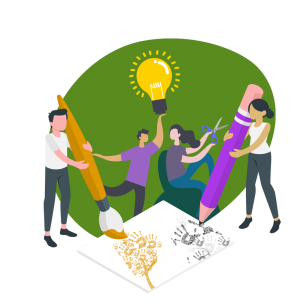The Euro-Med cruise

The main purpose of the activity is to challenge participants’ stereotypes and prejudices about other people especially minorities, as well as analysing the images and associations raised in the text.
Introduce the activity and try to get the participants to feel that they are really going on a cruise. (You can include beach props or arrange the venue so as to look like a departure hall). rovide a Handout of passenger profiles to each participant, and give some time for participants to read the passenger profiles.Inform that the task is to choose individually the three people they are most likely to travel with and the three they would least like to travel with.
Once everybody has made their individual choices, ask them to form into groups of four to five and share their individual choices and the reasons for them. Also, ask them to compare their choices and reasons and check where there are similarities. Ask them to come up with a common list by consensus (3 MOST WANTED and 3 LEAST). If possible, do not mention the time frame to allow them to discuss freely.
Once the subgroups have made their choices gather them back in plenary and ask each group to present their conclusions including the reasons for their common choices. They should also say in which “cases” there was most disagreement within the group.
Once all groups have presented and explained their choices, the facilitator starts the debriefing. The following questions may help to guide it:
How did you feel during the activity?
What were the major reasons or factors that made you make your decision as an individual?
What was the most difficult part?
What factors made you come to a consensus or prevented you from reaching one?
Do you think these situations exist in real life?
Has anyone in the group experienced a similar situation?
Which stereotypes does the list of passengers evoke?
To what extent have our own stereotypes and prejudices affected our decisions?
Where do we get these images from?
Are they usually given or do they come from our own imagination?
How would it feel to be in a situation in which nobody would want to share a ship’s cabin with you?
It is important to adapt the list of passengers according to your context and needs. Try to make it as real as possible. If needed, you may reduce the list to a maximum of 12 passengers and adapt it to the local or national situation of the group you work with.
Be sure that some of the passengers’ descriptions correspond to minorities that are familiar to the group, including “invisible” minorities such as homosexuals, people with disabilities, someone who is HIV positive etc. Consider this when you make your changes.
Do not emphasize too much on making a consensus as it may lead to false consensus. It is to be encouraged that the groups try to listen to each other and share their views. If a group cannot reach consensus, ask why it was difficult.It is important for everyone to respect each other’s opinions and not attack people for their personal views.
If some choices seem doubtful, it is more relevant to discuss the reasons which lead to a particular choice rather than to question personal decisions. In fact, both the participants and you, the facilitator, will be in difficult positions. For this reason beware not to let the discussion develop into “who’s got the least prejudice?” but rather to work on the fact that we all have prejudice.
t is also important to discuss and explore the fact that the description of the passengers is very brief, we know little about the personality or background of people. But isn’t that the way we normally react to information in newspapers and television, and in conversations or when meeting people for the first time?Learners can find examples on how specific human groups are depicted in their environment (school, family, friends, media,...) and analyse how these images have an impact on the creation of prejudices and may induce discrimination